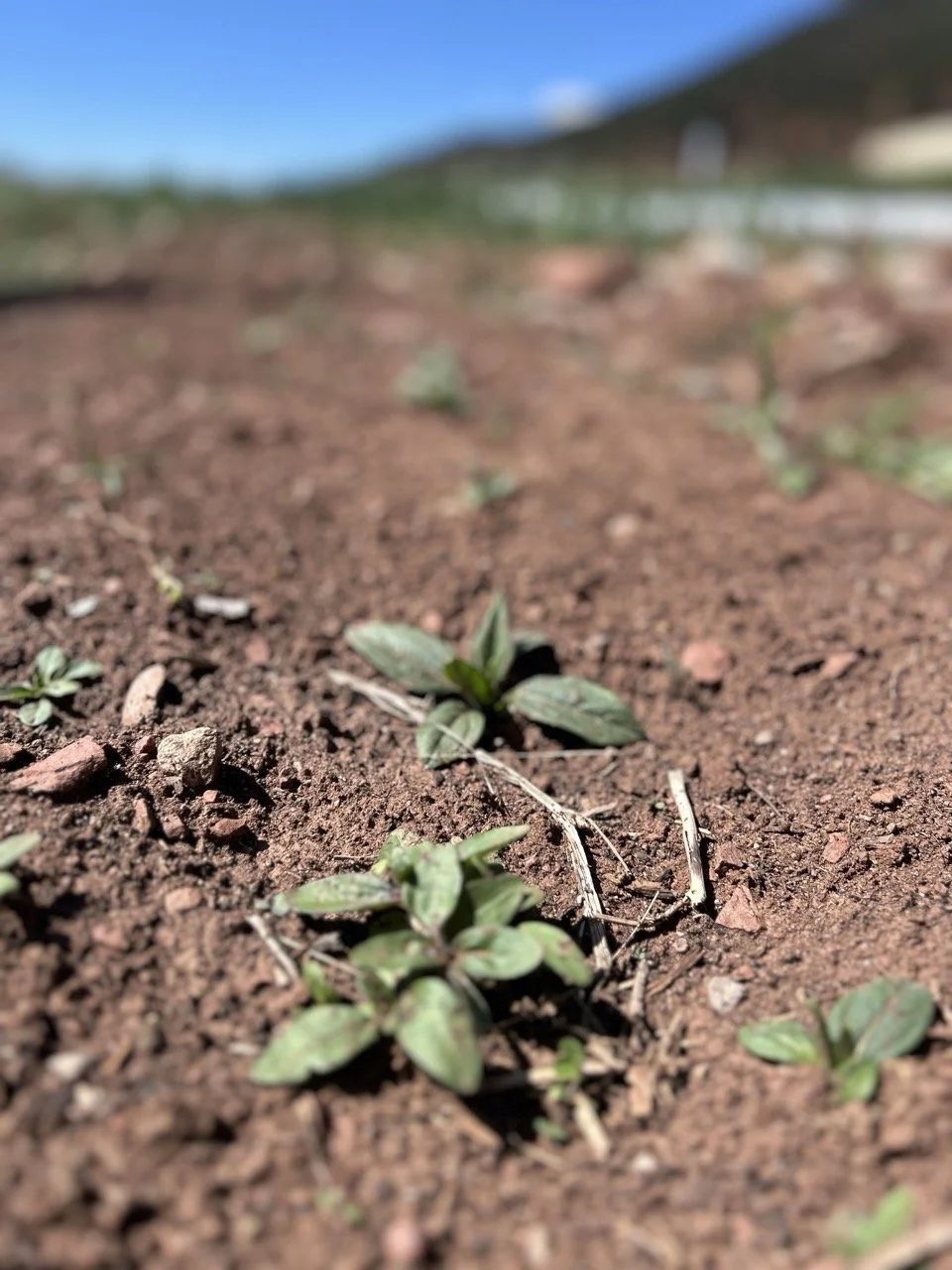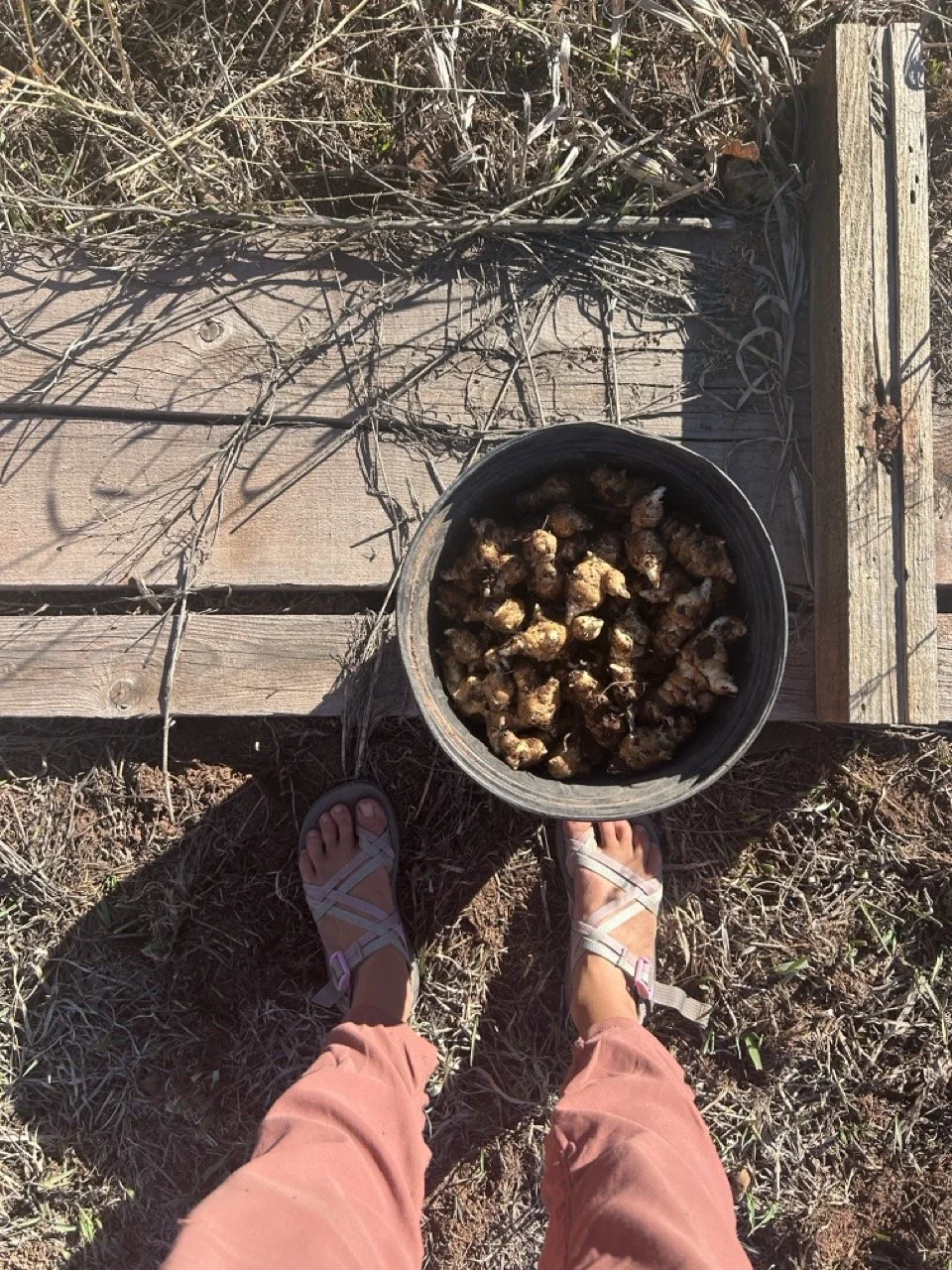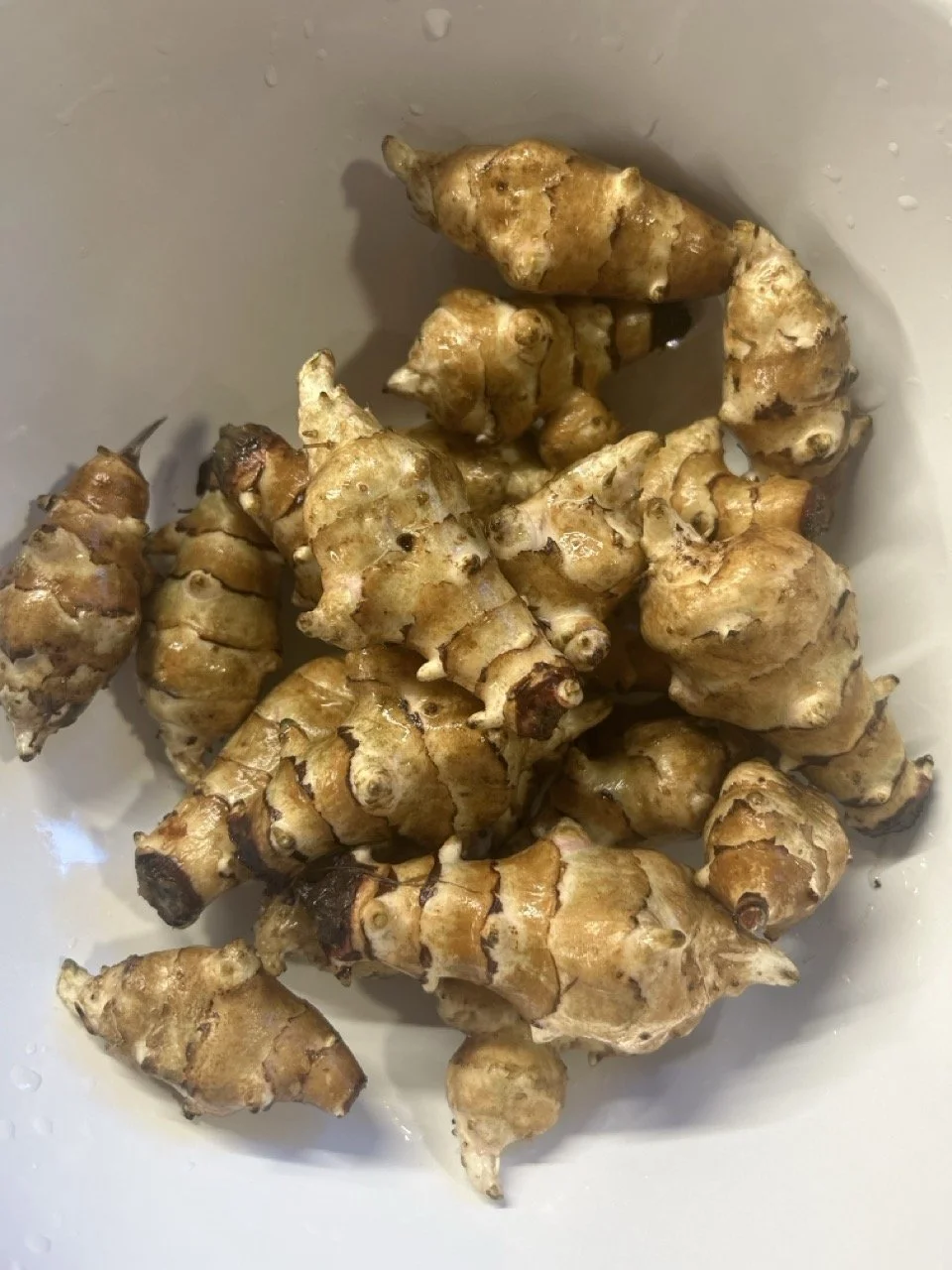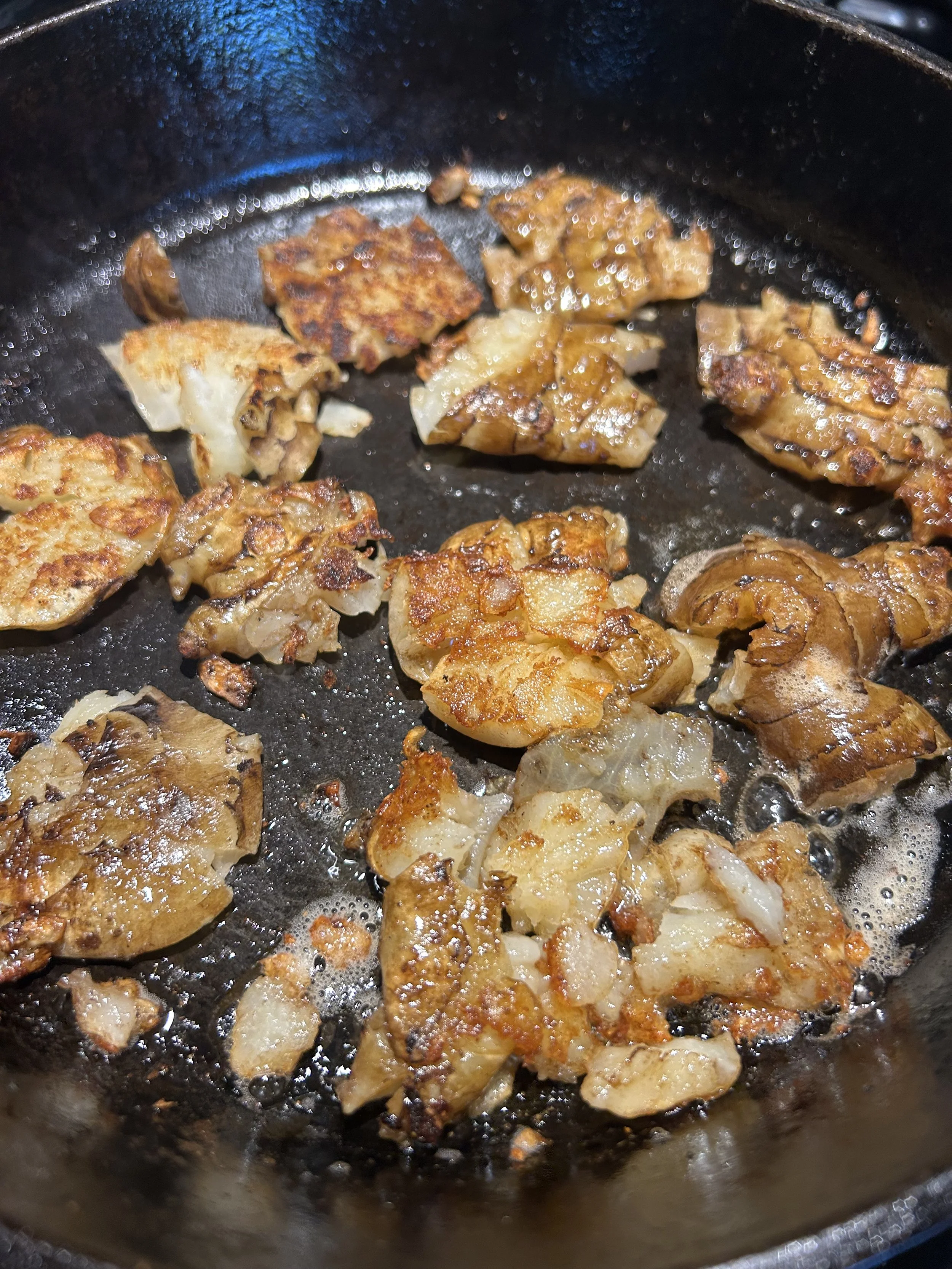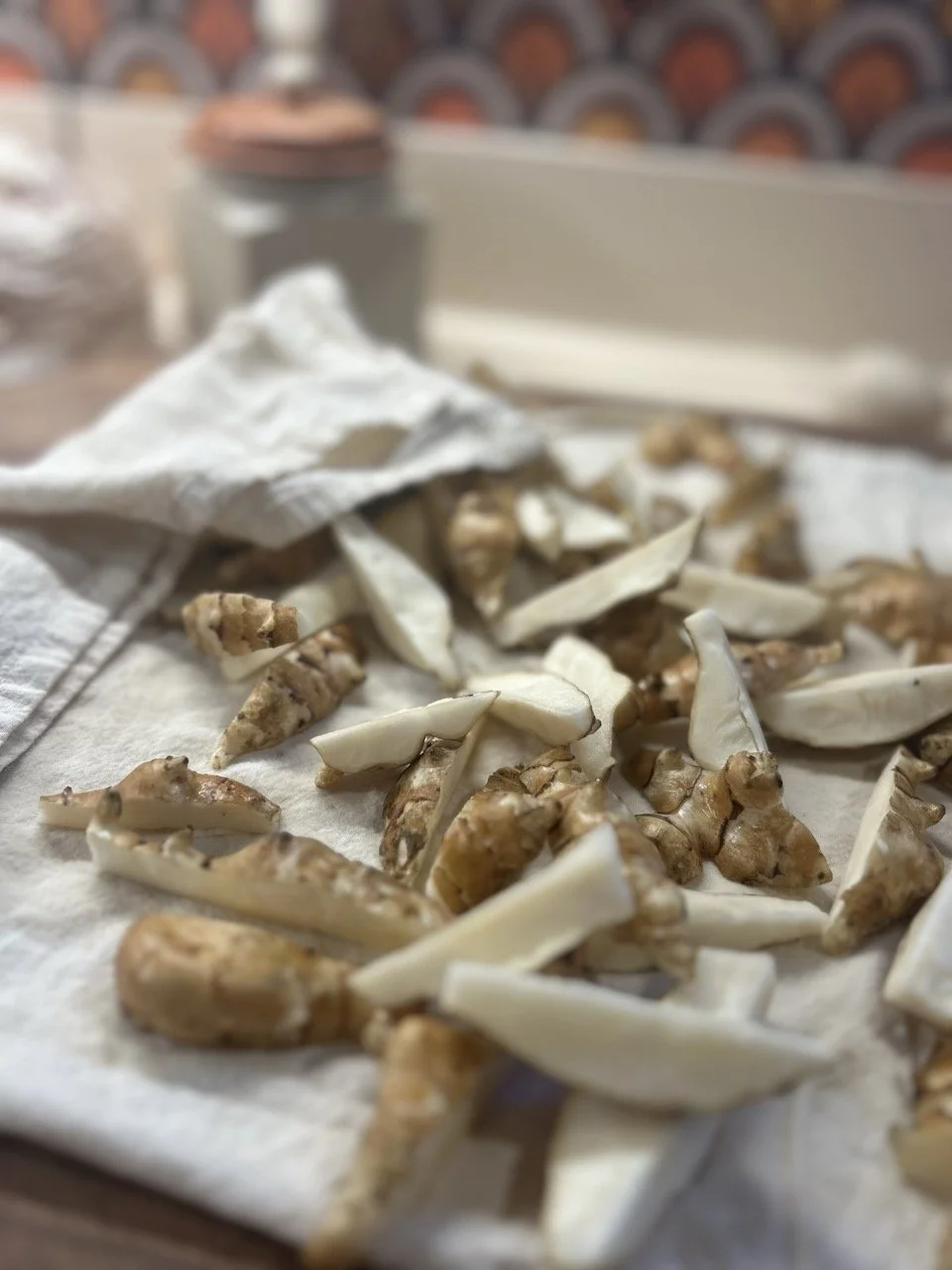Sunchokes 3 Ways: Mashed, Smashed & Oven-Baked Fries
Early this spring, I harvested my first bounty of sunchokes. And bounty is the right word.
Last winter, I ordered some Jerusalem artichoke tubers (roots) a.k.a. sunchokes. A small handful of tubers, which we broke up into maybe 15 bits and planted in a short row. Come spring, we moved them to a different bed. They bloomed beautiful yellow flowers in the summer, then dried up and fell over at the end of the season.
This spring — about a year after that very first planting — they were already greening up again, ready to greet another year. We wanted to move them again, so we dug. I was not expecting we would fill a 5-gallon pot with roots!
Yes — a handful became five gallons in a year.
Considering how astonishingly low maintenance this perennial plant is, I’m amazed we don’t eat them a fraction as much as we eat potatoes, as they are quite similar in how they can be prepared.
Of course, it has something to do with a carbohydrate called inulin.
The internet says inulin is a soluble fiber that humans can’t digest. Instead of being broken down in the stomach or small intestine, it makes its way to the colon, where it becomes fermentation fuel for your gut bacteria.
While that can be great for feeding your microbiome (prebiotics = good), the fermentation process produces gases like hydrogen, methane, and carbon dioxide. Cue the bloating, gurgles, and yes—farts.
Cooper calls them fartichokes but it makes me feel sad for this productive food crop with a reputation. 🥹
Here are a few strategies to reduce the effarts effects:
Start small: Your gut can adapt over time if you ease into it.
Cook thoroughly: Long cooking (especially boiling or roasting) can help break down some of the inulin and make it gentler.
Parboil + discard water: Some people parboil sunchokes and toss the water before finishing them another way.
Ferment them: Lacto-fermentation breaks down inulin before it reaches your gut—fermented sunchokes tend to be much easier to digest. I haven’t tried this yet! Will report back.
Pair with bitter greens or digestive herbs like fennel, bay leaf, or thyme.
Is it worth it?
I think definitely, yes! The flavor is kind of nutty and the texture is refreshing. Potatoes are hard to beat, but sunchokes give them a run for their money in the garden. Here are three ways I’ve enjoyed eating ‘em.
Mashed Sunchokes (With or Without Potato)
A nutty twist on classic comfort food.
Mash by hand for something rustic, or use an immersion blender for a silkier finish. I find both textures to be delightful.
Use all sunchokes, or mellow it out with some potato for extra creaminess and fluff.
Ingredients:
2 lbs total of root veg:
→ Use all sunchokes, or
→ Use 1 to 1.5 lbs sunchokes + ½ to 1 lb Yukon Gold potatoesSalt (for boiling water + to taste)
3–4 tbsp butter or olive oil
¼ to ½ cup cream or milk (from plants, cows, whatevs)
Freshly ground black pepper
Optional add-ins:
Roasted garlic (1–2 cloves)
Lemon zest or a splash of lemon juice
Fresh herbs like thyme, parsley, or chives
Steps:
Prep: Wash root veggies. No need to peel unless your heart fancies. Sunchokes are knobby and have crevices, but soaking for a few minutes in warm water, then scrubbing, does the trick. Chop off the ends and toss those into the compost bucket. Chop root veggies into golf ball sized chunks.
Boil: Place chopped sunchokes (and potatoes, if using) in a pot. Cover with water and salt generously. Think sea water and picture yourself swimming with sea turtles. Bring to a boil, then simmer until tender—about 15–20 minutes.
Steam Off: Drain well. Return to the pot for 2–3 minutes to let steam escape—this helps the mash stay fluffy.
Mash or Purée: Add butter or oil and mash by hand, or blend for a smoother texture. Stir in milk or cream a little at a time until you reach your desired consistency.
Season: Add salt and pepper to taste. Stir in any extras you like (garlic, lemon, herbs).
Serve warm with a pat of butter or drizzle of olive oil.
Smashed Sunchokes
These are so trendy, or at least they were and now they are a common side-dish option, hoorah!
I love how the color of the sunchoke skin pops when these fry, as if they have been waiting their whole lives to meet Kerrygold butter.
Ingredients:
1½ lbs sunchokes, scrubbed
Olive oil
Salt & pepper
Optional add-ins: rosemary, thyme, garlic powder, or your favorite seasoning blend (Adobo? Sazon? Harissa?)
Steps:
Boil: Add whole sunchokes to a pot, cover with water, and boil until just tender—about 12–15 minutes.
Smash: Drain and let cool slightly. Use the bottom of a jar or glass to smash each one flat (about ½ inch thick).
Season: Sprinkle with salt, pepper, and whatever else makes you happy.
Pan-Fry: Heat a generous slick of oil or butter in a cast iron or heavy skillet over medium heat. Add smashed sunchokes in a single layer—don’t crowd the pan. Cook until golden and crisp on both sides, about 3–5 minutes per side.
Alternatively, you can roast ‘em in the oven at 425°F until crispy and browned, about 25–30 minutes.
Serve hot. Or luke warm because you’re not on Top Chef!
Oven-Baked Sunchoke Fries
Shoestring, wedge, tater tot shaped — The fry is the limit.
(Sorry…)
Let’s get onto the recipe because everyone knows fries are good.
Ingredients:
1½ lbs sunchokes, scrubbed and cut into fry shapes (wedges or thick matchsticks)
Olive oil, butter, or duck fat (enough to coat the pan or toss before baking)
Salt & pepper
Optional add-ins: smoked paprika, onion or garlic powder, fresh rosemary, or a squeeze of lemon to finish
Steps:
Prep: No need to peel—just scrub well. Slice into fry shapes. If they’re extra knobby, work around the curves and keep the pieces roughly even.
Parboil (optional, but helps with crispiness): Boil in salted water for 5–7 minutes until just starting to soften. Drain and let dry completely.
Bake: Toss fries with oil and seasonings. Spread in a single layer on a baking sheet. Roast at 425°F for 20 minutes, flipping halfway, until golden and crisp.
Alternatively, you can pan fry like a diner cook. Heat a generous layer of oil or fat in a skillet over medium-high. Add fries in a single layer (don’t crowd) and cook 3–4 minutes per side, until golden and crisp. Drain briefly and season while hot.

